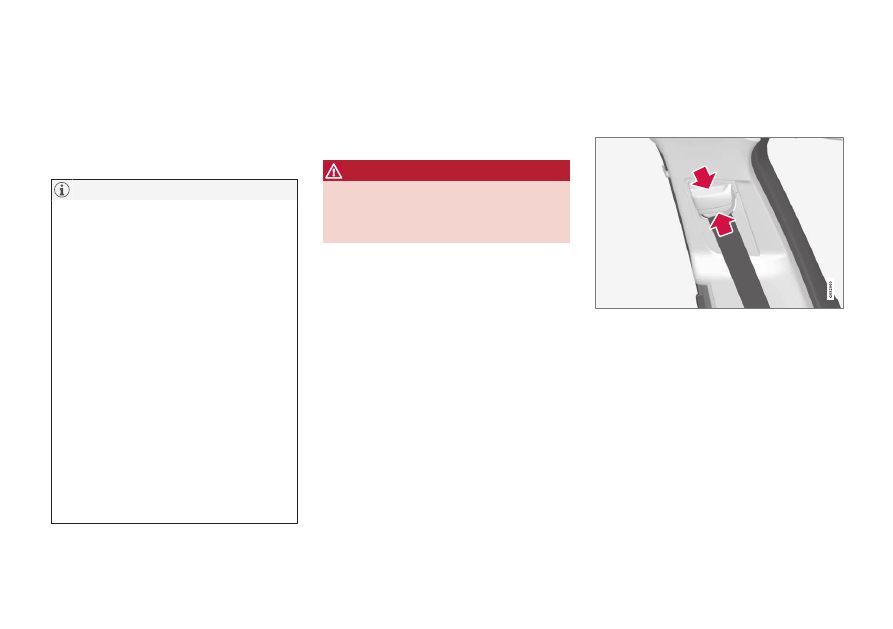Volvo XC90 T8 Twin Engine Plug-in Hybrid (2017 year). Instruction - part 4

||
SAFETY
68
Buckling a seat belt
1. Pull the belt out slowly. It should not be twis-
ted or turned.
Be sure that the seat belt in the center posi-
tion of the second row of seats is correctly
positioned in the seat belt guide.
Each seat belt is equipped with a seat belt
retractor that will lock up in the following sit-
uations:
•
if the belt is pulled out rapidly
•
during braking and acceleration
•
if the vehicle is leaning excessively
•
when driving in turns
•
if the Automatic Locking Retractor/Emer-
gency Locking Retractor (ALR/ELR) is
activated (each seat belt (except for the
driver's belt) is equipped with the
ALR/ELR function, which is designed to
help keep the seat belt taut. ALR/ELR
activates if the seat belt is pulled out as far
as possible. If this is done, a sound from
the seat belt retractor will be audible,
which is normal, and the seat belt will be
pulled taut and locked in place. This func-
tion is automatically disabled when the
seat belt is unbuckled and fully retracted).
2. Insert the latch plate into the receptacle. The
seat belt retractor is normally "unlocked" and
you can move freely, provided that the shoul-
der belt is not pulled out too far.
> A distinct click will be audible.
WARNING
The seat belt latch plate should only be
inserted into its intended receptacle. Inserting
it into one of the other receptacles may pre-
vent it from functioning properly.
3. The height of the seat belts in the front seats
and outboard rear seating positions can be
adjusted. The height of the shoulder section
of the seat belt must be correctly adjusted.
Press the button and move the upper seat
belt anchor up or down.
Position it as high as possible so that the
shoulder section of the belt is across the seat
occupant's collarbone and not across the
throat.